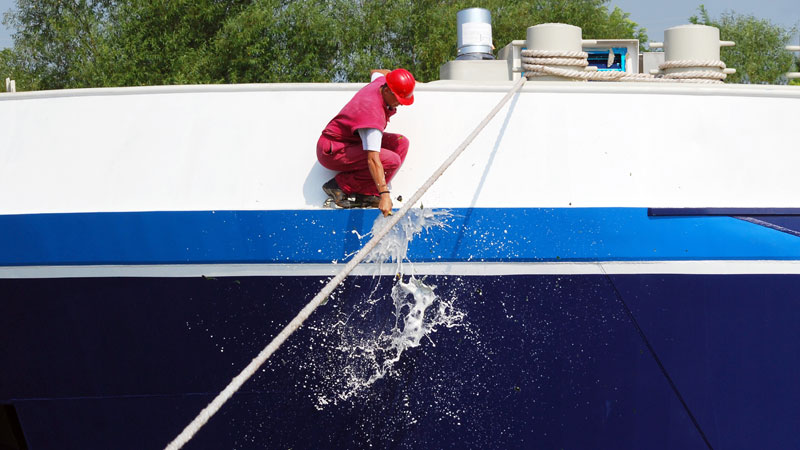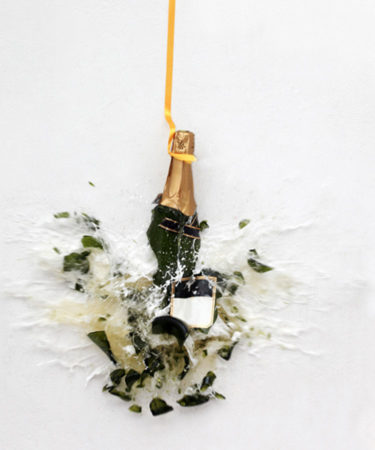While he definitely wasn’t the first to do the deed, Ocean PenaVega may well have been the youngest. On Nov. 15, 2018, the 1-year-old christened the world’s largest cruise ship, Royal Caribbean’s 6,680-passenger Symphony of the Seas, by smashing a bottle of Champagne against its hull.
(Granted, he didn’t actually smash the bottle himself. The infant pressed a button that set the wine traveling down a rope and into the ship’s hull.)
For as long as mankind has sailed the oceans, there’s been some form of ceremony to mark the launch of a new ship. The Babylonians chose to sacrifice oxen, while the Vikings offered slaves to their sea god. Both believed these acts would bring them good luck and safe travel.
The (much-less-savage) practice of christening vessels with sparkling wine dates back to 1891, when Britain’s Queen Victoria launched Navy cruiser HMS Royal Arthur by smashing a bottle of Champagne against it.
“It was a very prestigious warship with a royal name so Champagne would have seemed fitting, it’s a celebratory drink,” John Graves, curator of ship history at London’s National Maritime Museum, told the BBC. “But before that, it had been the tradition to use [other] wine.”

In 15th-century England, royal representatives made appearances at ship-launching ceremonies. They would drink from a silver goblet of wine aboard the vessel, pour a splash on the deck, and then throw their goblet overboard.
By the 18th century, the Royal Navy was launching so many new vessels that throwing away a silver goblet with each new launch became too expensive. As a cheaper alternative, the Navy turned to smashing wine bottles instead.
Champagne eventually succeeded still wine due to its associations with celebration. In addition, the pressurized bottles provide a much more impressive explosion on impact.
Lately, seafaring celebrants have been incorporating other alcohols into their good-luck rituals.
In July 2014, Queen Elizabeth II used a bottle of Bowmore Surf Scotch Whisky to launch the Royal Navy’s newest vessel, HMS Queen Elizabeth. The ship’s construction took place in Rosyth, Scotland, so whisky was chosen over Champagne. The liquor came from a special barrel that was set aside during the Queen’s visit to the distillery in 1980.
For some, the practice may seem like a waste of a good bottle, but a close study of history suggests that it might be a sacrifice worth making. White Star Line, the company that built and launched the Titanic, didn’t christen any of its liners with Champagne, or any other alcoholic drink.
